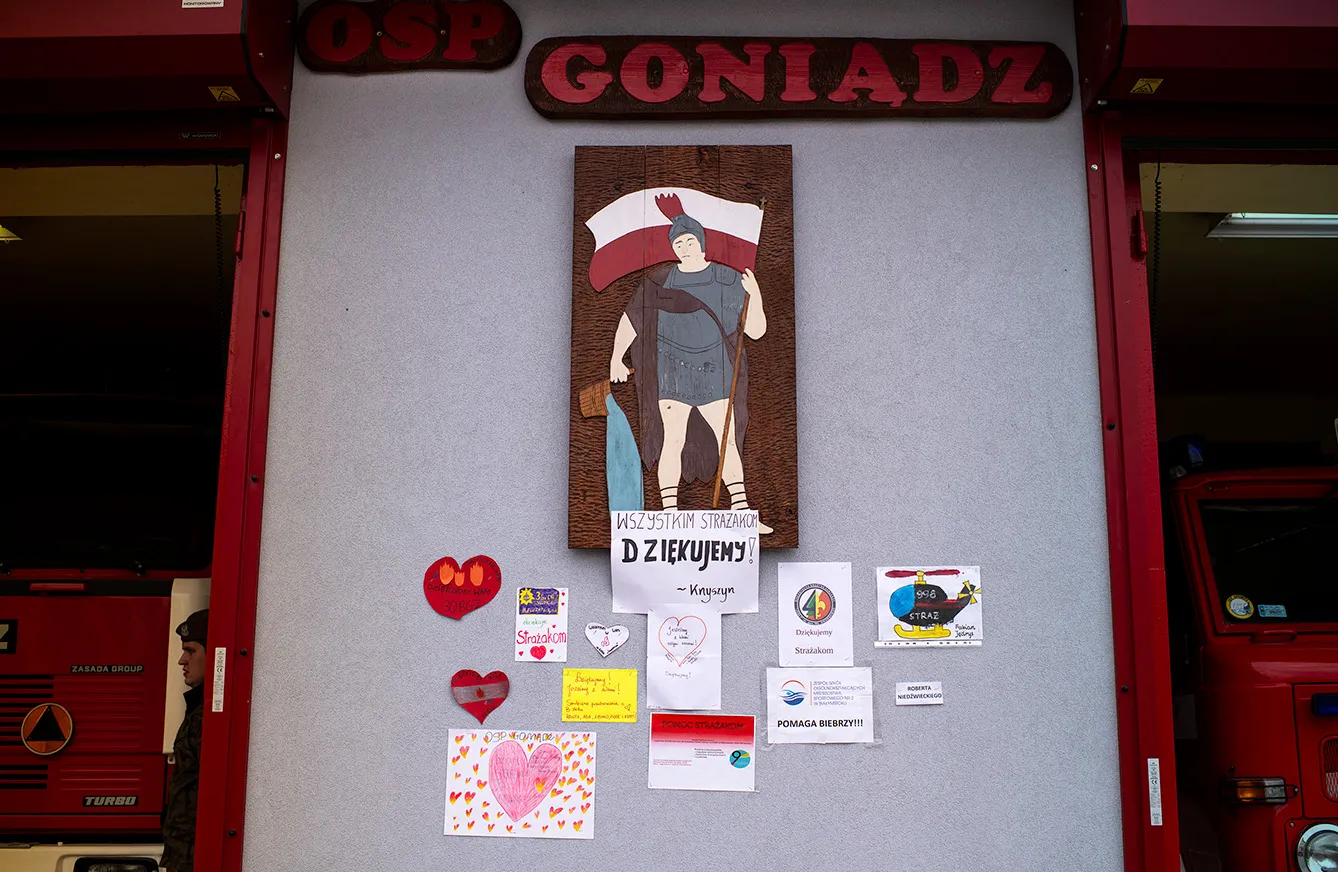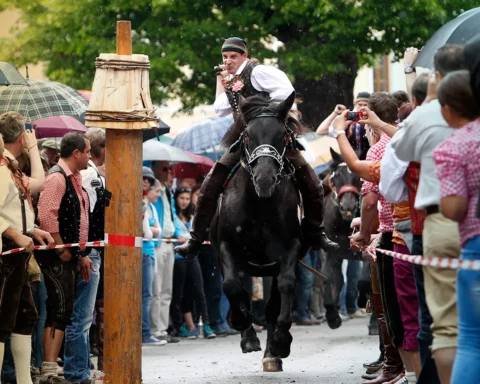Long story short: there was a guy, let’s call him Florian (because that was his name), who, as a fifty-something-year-old man in 304 AD, witnessed the persecution of Christians in Ancient Rome. However, the story is Central European, as Florian was born and died in the territory of current Austria, and the persecutor, Emperor Diocletian, built his retirement Villa in Spoleto – now Split, Croatia.
Part of the hunt for Christians was to catch those who served in ranks of the Roman military, and Florian stood in their defense – as his duty as a commander was to investigate cases of worshipping the Christian God. As he didn’t obey, he was sentenced to death and drowned in the Enns River with a stone around his neck.
St. Florian’s peregrination
Now, the depiction of his life mentions his firefighting duty. But as history and legend converge, let’s skip almost a thousand years and travel to times when Saint Florian, the martyr, was the saint patron of Linz in Austria. At that time, he was worshipped in German lands and as a saint, protecting from fires and looking after the chimney sweepers. In the 12th century, he was a ready cultural export goods to Poland.
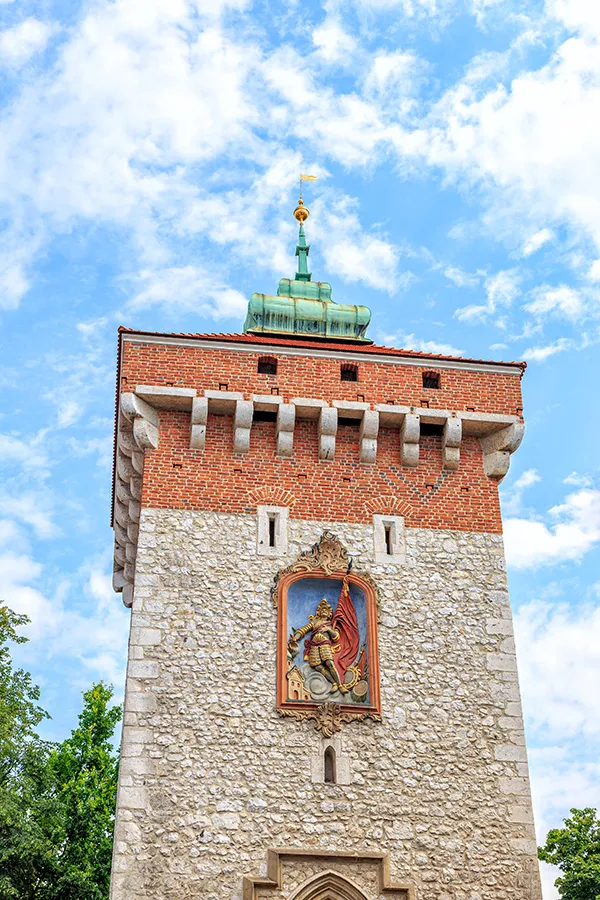
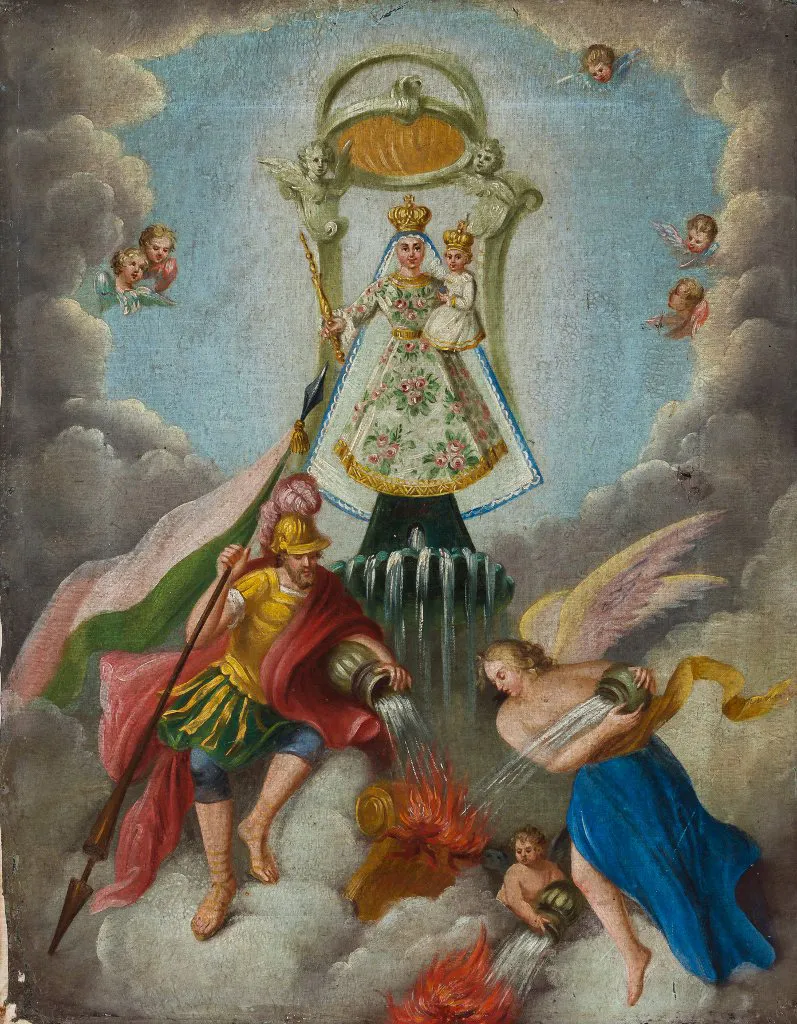
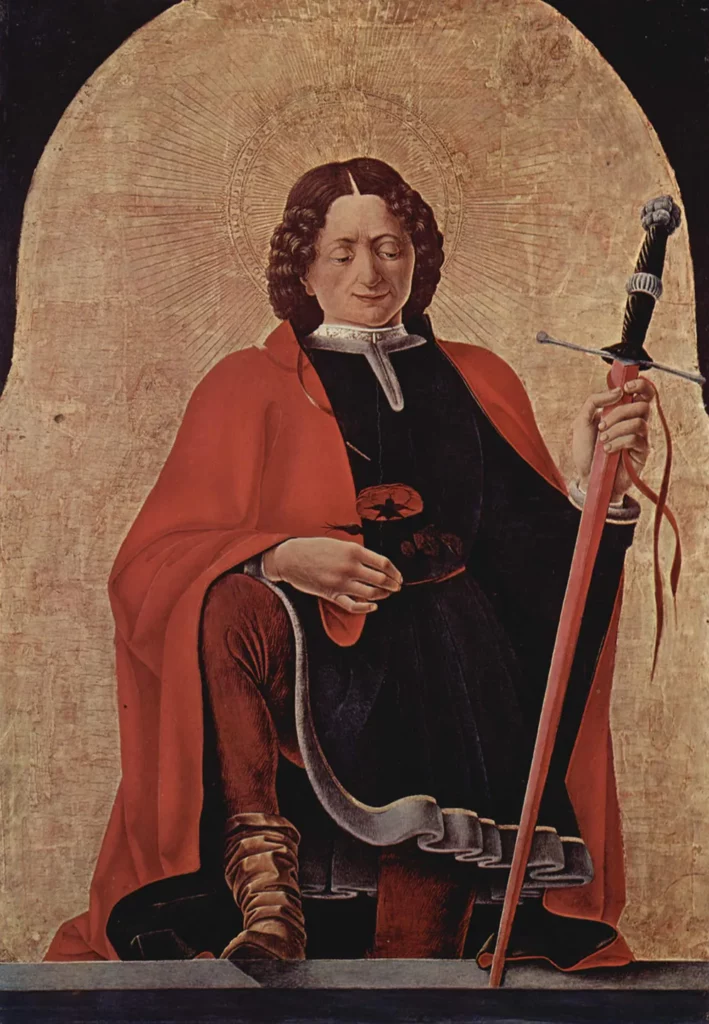

By then, Poland had been Christian for some two centuries, yet still troubled by incidents of pagan reactions and, more importantly, consolidating power in the hands of the Christian-royal complex. In this context, any reinforcement of the Catholic narrative was appreciated. The Pope’s offer was to transfer some of Saint Florian the Martyr’s relics from Linz to Cracow, where they are supposedly held to this day.
Cracow, once Poland’s capital, developed in the form of urban sprawl, with a ring of settlements established around it. One of them is Kleparz, now a stone’s throw from Cracow’s main square and part of the old town.
Legend has it that a horse-drawn carriage transporting saint Florian’s remains stopped in Kleparz, and – superstitious as medieval people were – they decided to leave them there. The church of Saint Florian, founded in 1185, is a major feature of the area and a well-maintained, important place of worship and cultural heritage.
The Saint Firefighter
And this is where the story gets interesting, as centuries after the foundation of the church and the development of Kleparz around it, the area witnessed a huge fire in 1528. And guess what? The church of st. Florian miraculously remained untouched when everything burned down around it.
The cult of the saint firefighter took off in Poland immediately. Soon, the image was described as the specter of saint Florian himself appearing over the church with his traditional bucket of water, protecting his temple from the flames. No one seemed to point out that the saint was supposed to protect the people and not an empty establishment holding his own remains.
When you drive through the Polish countryside nowadays, virtually every village has its firefighting station (many of them are volunteer formations, not unlike scouting organizations for young adults). And nearly every one of them has a peculiar figure in a small chapel built in the station walls or positioned nearby. The person has a Roman legionnaire’s outfit and is holding a bucket of water, sometimes even pouring it over a church. There saint Florian stands guard to protect the towns, cities, and especially fire-sensitive objects from catching fire.
Nowadays, spontaneous city fires, though still menacing, are easier to control and less deadly once they outbreak than before. Perhaps the technology has something to do with that, not necessarily the saint firefighter’s patronage. But still, as a soldier responsible for the legion’s fire safety protocols, Saint Florian has his part in this development – even from the secular point of view.


